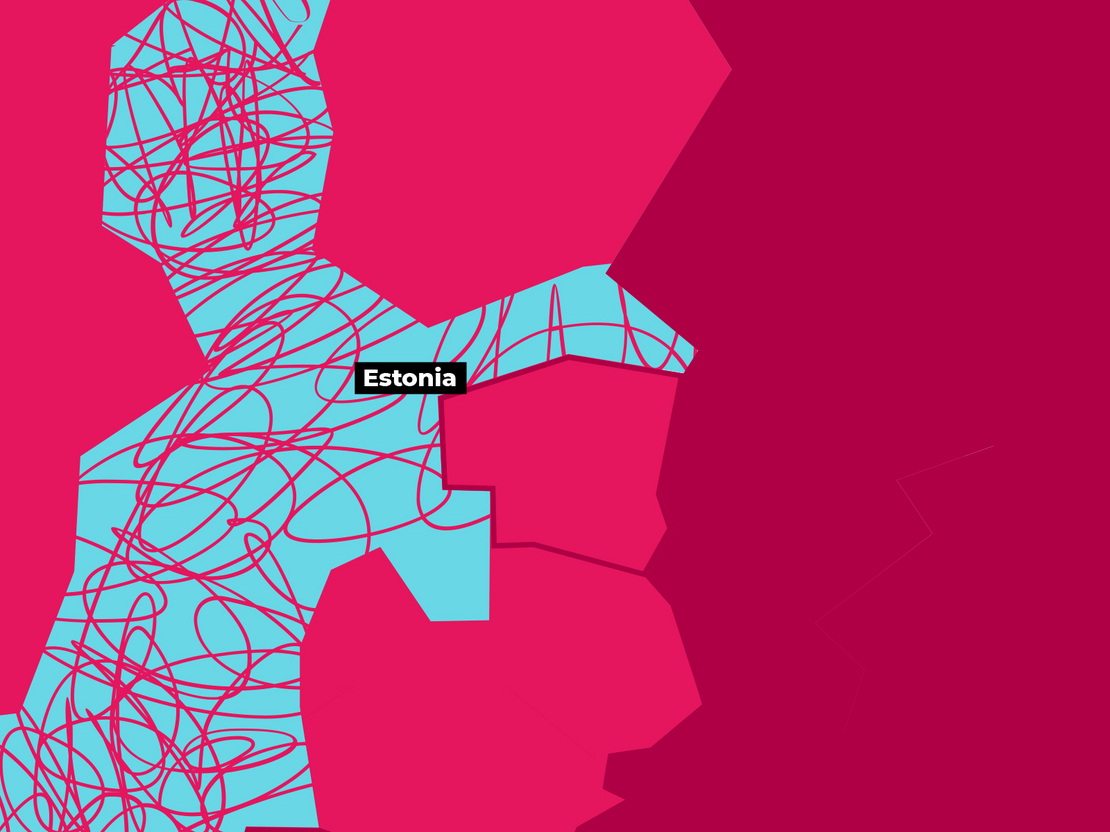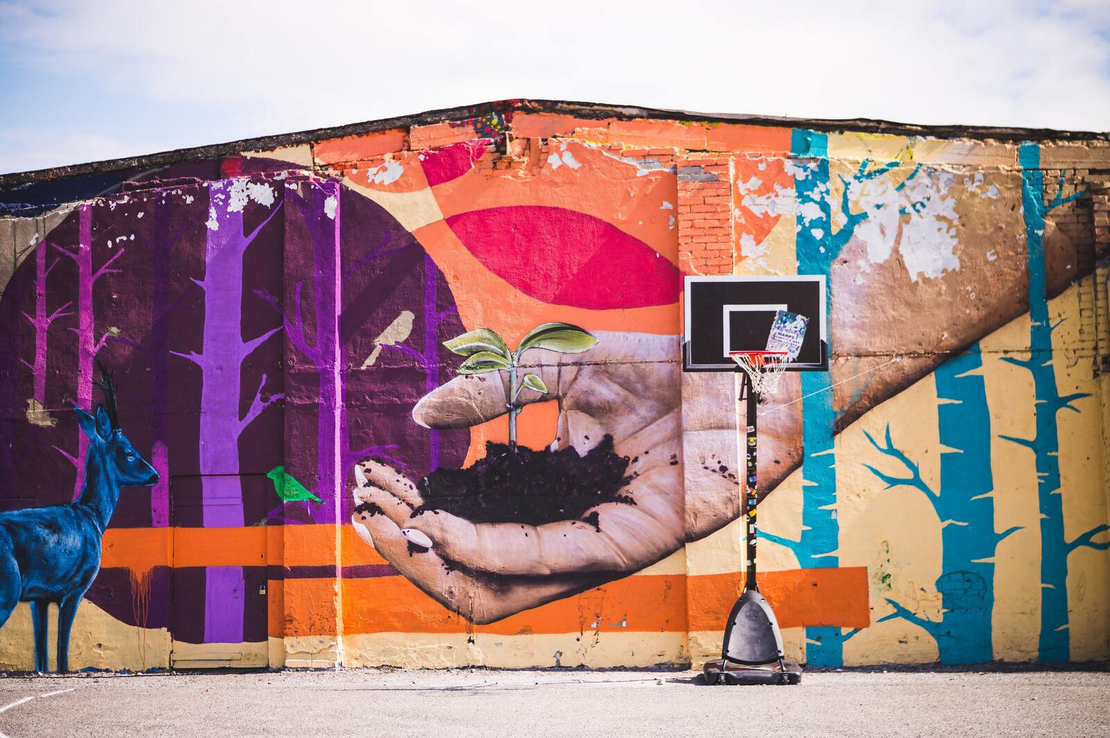Estonia
| NUTS code | EE |
|---|---|
| Population | 1.32 Million |
| Area in km² | 45.227 km² |
| GDP/inhabitant (year) | 19.737€ (2018) |
| GDP growth rate (year) | 3.9% (2018) |
| Unemployment rate (year) | 5.0% (2019) |
| Cohesion Policy category | Less developed region |
Number of support organisations in the region: 17
Global creativity index – GCI, country level: 0.528 (2015)
Regional Entrepreneurship Development Index – REDI: 45.3 (2017)
1. Introduction
In Estonia, the discussion about the cultural and creative industries began at the state level with the surveys conducted in 2005, 2009, 2013 and 2015 by the Estonian Institute of Economic Research. The year 2007 was another important moment for the CCI development as Tallinn’s application for the European Capital of Culture 2011 focused on valuing culture in the evolution of a creative city. In 2009, several programmes targeting the development of non-profit organisations and enterprises were designed and launched by the state-owned foundation Enterprise Estonia (EAS) in cooperation with the Ministry of Culture. Until 2013, the Ministry of Culture and the Ministry of Economic Affairs and Communications was responsible for the development of creative industries. Starting in 2014, the development of the creative economy has been the assignment of the Ministry of Culture, based on the principles of cultural policy delineated by Culture 2020, the Estonian Business Growth Strategy 2014-2020, and the provisions of the implementation plan of the European Union Structural and Investment Funds for 2014-2020 [1].
Thanks to the continuous rise of the role of the private sector, combined with the revenue generated by creative organisations themselves, the upkeep of the CCI is expected to be less dependent on government funding. In its 2020 Strategy, the Estonian Ministry of Culture commits to create supportive conditions to trigger private investment in culture (from entrepreneurs, NGOs and individuals) as well as to conduct initiatives in partnership with private companies. The programmes for NGOs and the public sector target mainly regional and local development, while the programmes targeted at the private sector provide support for participating in international fairs in order to improve the image of Estonian cultural goods and services, and to foster collaboration with partners abroad. Three strategic goals have been established in the 2019-2022 work schedule, along with the relevant social, economic and external indicators: 1) the implementation of cultural influence for the promotion of social cohesion; 2) support for culture-based creativity in education and innovation, and for the promotion of employment and economic growth; and 3) the strengthening of international cultural relations.
2. General information about Estonia
A study by Estonian Institute of Economic Research [3] has shown that in 2015 over 9,098 companies and institutions operated in the creative industries sector, amounting to 11.6% of the total number of companies in Estonia and accounting for 1,481 million euros of total income (including €632 million for cultural industries), and contributed to the Estonian value-added with €594 million (including €220.8 million for cultural industries), totalling 2.9% of the GDP. The most recent numbers, according to Eurostat statistics for the year 2018, revealed that over 37,200 people were employed in the creative industries; accounting for 5.6% of Estonia’s working population [4].
3. Economy
For 2017 the main destination market for creative goods exports was Europe (97%) with Finland heading the list and Russian Federation in second [2]. As Estonia has a very limited market and a small population, it is vital for Estonian companies to cooperate with neighbouring countries and form working clusters. Estonia has a number of incubators in Tallinn and the country ranks high in digital development. Acknowledging and valuing the potential of CCI in Estonia is part of the Estonian Business Growth strategy 2014-2020 to position the country as an economy providing production-related creative services (in product development, engineering, design and marketing) and to achieve a more profitable position in value chains. According to the same strategy Estonia will take special measures to increase exports, use all the potential of creative industries to operate successfully on foreign markets and to develop companies that are able to grow. [5]
In 2009, Enterprise Estonia – one of the largest institutions within the national system for entrepreneurship support – had launched the integrated program for raising awareness called Creative Estonia. This program aims to facilitate contact between creative professionals and businesses, policymakers, students and businesses from other sectors to promote creative entrepreneurship and creativity in society. For today, this state supported initiative has transformed into a leading CCI support organisation in Estonia – Creative Estonia Foundation.
International links
This kind of initiatives and programs include cluster support programs (e.g. film industry cluster development), export support and joint marketing programs (e.g. “Tallinn Music Week” – an event to show-case Estonian music, “Black Market” – a film co-production), skills and knowledge development programs (e.g. design management training courses) and awareness raising and entrepreneurship promotion programs encouraging cross-overs with other sectors. [6] To facilitate creativity, the development of a creative working and overall environment is supported in order to improve the knowledge of entrepreneurs, creators and consumers and to foster creative development in the educational system. In order to improve the competitiveness and increase the volume of exports of enterprises operating in creative industries and to link the potential of creative industries to the rest of the economy, it is planned to pay attention to awareness-raising (on CCIs), carry out activities aimed at developing knowledge and skills (including training courses), support creative incubators, sectoral development activities and regional and sectoral development centres.
4. Regional business eco-system
In this configuration, cultural and educational institutions focus on early stages of the creative value chain (creation phase) through educating creative professionals and intermediary organisations and their support to the core arts fields and cultural industries. There is a need for more exploratory education, courses and new types of intermediaries. This can be most likely provided by CCI support organizations. For example, higher arts related degrees are provided by few universities and some universities have departments for professional education e.g. in arts and music. Separate arts education programmes can be acquired from several institutions around the country. The educational institutions are state bodies, state-owned public bodies, municipal institutions or private (non-profit or for-profit) organizations, private ones being in minority though.
Overview of the role of CCI sector in regional business
Within the interest and supportive organizations, there are particularly many from sectors of architecture, design, music, dance and theatre. Many of the interest organizations, which are supporting several CCI sectors, are state-administered. When supporting the CCIs, a lot of emphasis has been put on the incubator activities that have been set up specifically for creative enterprises. In these cases, a large part of incubators’ funding comes from the municipalities, implicating the cities’ dedication for the creative industries. In 2015, the state support to CCI formed 13% of the sector’s total income. [3].
In addition to the funding resources of the country, the EU enhances access to finance for CCI SMEs and small public organisations operating within CCI through the Cultural and Creative Sectors Guarantee Facility. This EU financing support mechanism is demand-driven and its availability in Estonia is subject to the take up by local financial institutions or foreign financial institutions with operations in the country.
Channelling the funding for CCIs indirectly through creative incubators has been favoured, by offering supportive services through mediators and development centres, by joint marketing platforms, clusters, and incubators; it is possible to provide support actually for longer term than by making a one-time direct investment. However, the biggest problem is with the private funding. There are not enough private investors, venture capitalists or business angels.
In Estonia, where 21 % of people in cultural employment were aged 15-29 (compared to 19 % in total employment), young people’s share of culture-related jobs is higher than in the rest of the EU. Besides, the cultural workforce is highly qualified with more than 65% having completed tertiary education, while self-employment corresponds to 17% and nearly 25 % of all artists and writers in the country were self-employed in 2017.
5. CCI in the region - Overview of the role of CCI sector in regional business
CCI support and development system [7]
| CCI Support Organization | Types of Support | Important CCI projects, programs, partnerships |
|---|---|---|
| Creative Estonia | CCI expertise; regions development; cross sectorial activities; for SMEs: trainings, incubation, mentoring, internationalization support | Development program in International level: in Georgia, Moldova; Loov Eesti+Maa Program; web based incubation program PESA; export program PESA+ |
| Tallinn Creative Incubator | Incubation, mentoring, co-working | Focus: product/service design business or other company in creative field, zero-waste start-ups |
| Tallinn Design House | Export platform providing premium store space and showroom, brand and marketing support for established designers | Focus: fashion and interior |
| Estonian Ministry of Culture | Development and advising of creative industries since 2014 | Focus on increasing of CCI export capabilities, cross-sectoral cooperation with CCI and other sectors, facilitating support structures’ services’ competitiveness |
| Tartu Centre for Creative Industries | Incubation, mentoring, co-working | Focus in film, design, fashion |
| Creative Industries Center of Viljandi County | Incubation, mentoring, co-working | Focus: traditional metal and textile crafts |
| Estonian Music Development Centre - EMDC | EMDC is a platform organization that unites, initiates and coordinates development and export projects for Estonian composers, interpreters, choires etc. | Focus on competitions as Young Composer, also Estonian Music Days, World Music Days etc. Organizing conferences. |
| Creative Industries Incubator in Narva - OBJEKT | Incubation, mentoring, co-working | Focus: fashion, performing arts, film and video |
| Estonian Design Centre | Meeting point of designers and entrepreneurs, consulting, studies | Focus on support how to use design strategically, and by this increasing value of products and services. Trainings and workshops. Competitions: Young Gun |
| Storytek Accelerator | Incubation, mentoring, co-working | Focus: film, new media |
| Digix – Digital Creative Media Incubator | Incubation, mentoring, co-working | Focus: film, digital media |
| Fundwise & Hooandja | Mentoring, investments | Crowdfunding platforms |
| Telliskivi Creative City | CCI Community | Festivals, collaboration |
| Enterprise Estonia | Grants | Export Grant for CI; Innovation voucher; Development voucher |
| Estonian Centre of Architecture | Support to export, networking, consulting, mentoring | Open House Tallinn, City Forum, international competitions Tiigrihüpe Vol.2, PuitAIT vol3. |
| Estonian Film Institute | Development and marketing of Estonian film production | Creative Europe Media, Estonian Film and Tele Gala, internation cooperation agreements |
| Tallinn City Council | Grants, mentoring | Foreign trade fair grant for SMEs etc. |
6. Knowledge base and skills
Education and training programs are available for CCI companies and entrepreneurs. These are provided by LoovEesti and Tallinn Business Incubators, Tartu Center for Creative Industries, Viljandimaa Loomemajanduskeskus etc. for reasonable fees for consultancy and coaching. Provided programs depend of methodology. For example Creative Estonia offers PESA program that lasts 8 months. Tallinn Creative Incubators has support programs which last 4 months per company.
Education and training programs are also available at universities Taltech’s business incubator Mektory provides premises, internet and consultancy not only for technology specific start-ups, but also for CCI start-ups coming from other universities (e.g. co-operating and supporting architecture start-ups from Estonian Arts Academy).
STARTER Tallinn - Business idea development program by Tallinn University, TalTech, Estonian Academy of Arts, Estonian Academy of Music and Theatre, Estonian Business School, Estonian Entrepreneurship University of Applied Sciences.
Education and training programs at other institutions
CLEVER (Creative Leadership & Entrepreneurship – Visionary Education Roadmap) – the project researching CCI activities in Israel and Estonia;
NORDIC BUZZ – design enterprises preparation and participation in Nordic design fairs.
Music Estonia Program VOLÜÜM - Volume is an export accelerator programme for Estonian artists and managers providing them with a personal mentor for half a year and new skills in the form of seminars and workshops.
Marketing Institute - focusing on training and consultancy in export, marketing and entrepreneurship.
7. Regional CCI development outlook
Despite in Estonia for CCI sub-sectors there do not exist higher prioritization than for others still barriers based on the company’s turnover are present in the case they look for support from some support organizations. Also, uncertainty level among arts universities students and nascent CCI entrepreneurs is high. There is a need for the change i.e. needs for more exploratory education, courses and innovative solutions; CCI needs new types of actors. This can be most likely provided by CCI support organizations.
More cross-border collaboration has to be developed. CCI sector has huge potential to give added value to the other sectors and boost regional development.
References
- Estonian Ministry of Culture (2019). https://www.kul.ee/en/activities/creative-industries
- UNCTAD (2018). Creative Economy Outlook: Trends in international trade in creative industries. https://unctad.org/en/PublicationsLibrary/ditcted2018d3_en.pdf
- Eesti Konjuktuuriinstituut. (2018). Eesti loomemajanduse olukorra uuring ja kaardistus. Tallinn: EKI
- Eurostat (2018). Culture statistics – cultural employment. https://ec.europa.eu/eurostat/statistics-explained/index.php/Culture_statistics_-_cultural_employment
- Estonian Entrepreneurship Growth Strategy 2014-2020 (2013). https://kasvustrateegia.mkm.ee/index_eng.html
- Ragnar Siil. (n.d.) Creative industries policy in Estonia. https://www.looveesti.ee/en/cci/creative-industries-policy-estonia/
- Loov Eesti. Support Structures https://www.looveesti.ee/en/support-structures/






